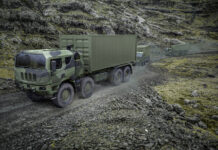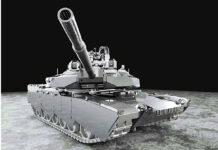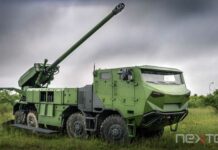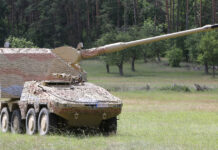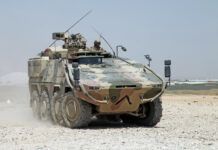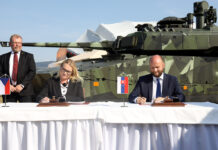The Turkish Navy will receive 27 tracked Marine Assault Vehicles (MAV) for amphibious operations. According to FNSS, a demonstrator is currently subject to qualification tests. Once the tests are completed, deliveries are scheduled between 2021 and 2022.
The MAVs will reportedly be delivered in three variants. In addition to 23 personnel carriers, two command vehicles and two recovery vehicles are planned. Except for the recovery vehicles, all MAVs are equipped with the CAKA remote-controlled weapon station, which can be equipped with a 12.7-mm machine gun or a 40-mm automatic grenade launcher. A thermal imaging device is used for fire control. The MAV crew consists of the driver, commander and gunner.
The troop carrier can accommodate 18 soldiers while the command variant offers space for ten passengers in addition to workstations. In the recovery variant, there is room for six passengers and the vehicle can be dismounted via a hydraulically operated ramp at the rear.
Amphibious MAV Features
The MAV weighs around 30 tonnes and is powered by a 440 kW diesel engine providing a top speed of 70 km/h on land. In the water – driven by two water jet nozzles – the speed is 13 km/h. According to the manufacturer, the MAV can safely float up to sea state 4. This means wave heights of up to 2.5 m with a wind force in the range of 5. For operations in water, FNSS specifies a maximum range of 15 km.
The bottom-reinforced hull is made of a “military-grade” aluminium-magnesium alloy, which is supposed to provide protection against ballistic threats and impacts. The STANAG 4569-certified protection can be customised with add-on protection. Other protection features include an automatic fire extinguishing system and a special NBC protection system. The design provides for the vehicle righting itself after capsizing. A near-production MAV was on display at the FNSS stand at the IDEF exhibition in Istanbul.
Gerhard Heiming



